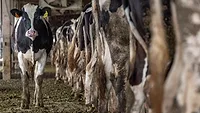Responsible Use of Antibiotics: Are We Making Progress?

With increasing concerns about antibiotic resistance and implications for human health, the movement toward reducing the use of antibiotics in livestock animals is growing steadily worldwide, and the poultry industry is leading the way. Given the importance of this topic, a roundtable discussion was held at the 2018 Annual Meeting of the International Association for Food Protection (IAFP) in Salt Lake City (for information about the IAFP 2019 roundtable, see “IAFP 2019 Roundtable: Antibiotic Reduction, Alternatives, and the Relationship to Food Pathogen Outbreaks”). What follows is a summary of that conversation.
Reducing antibiotic use could take several forms, from no antibiotics ever (NAE), considered by some to be extreme, in which livestock animals have never been fed any antibiotic during their lifetime, to responsible use, considered a more balanced approach. “Responsible use” means that producers follow established criteria to use antibiotics only when medically necessary and under veterinary oversight and third-party verification. The goal of responsible antibiotic use is targeted treatment to control and ameliorate clinical disease and not let animals suffer.
At present, producers have a choice in how to raise their animals, using production practices that they deem most important. It should be noted that there are only retail labels available for the more extreme programs, such as NAE, but no labels for either conventional or responsible antibiotic use. Caution should be urged in passing judgment on one type of production practice versus another, as that is often harmful to the overall market.
When a poultry producer changes from conventional production, wherein most animals receive medically important drugs prophylactically in the hatchery or in the feed, to a responsible-use program, the treatment rate with medically important drugs averages about 3 percent—a 97 percent reduction of medically important drug use.
To achieve a treatment rate of 3 percent, a very thoughtful biosecurity animal health plan is necessary to prevent illness. Management practices including vaccination, nutrition, hygiene, and housing are all vital to biosecurity.
The U.S. broiler business has undergone a rapid paradigm shift toward NAE production, from 3 percent in 2014 to 48 percent in 2018. This transition has involved changes in farm management, different approaches to coccidiosis control, changes in vaccination programs, experimentation with non-antibiotic alternatives, and changes in ration formulation and ingredient selection. There have been no magic bullets, and there have certainly been setbacks as integrators continue to seek a successful path to controlled production cost, flock performance, and food safety.
Progress in the EU
In 2017, the European Commission launched a European Union (EU) “One Health” Action Plan to bring down antibiotic-resistance issues with three objectives:
1. Making the EU a best-practice region
2. Boosting research, development, and innovation
3. Shaping the global agenda
A concept developed in the early 2000s, One Health espouses the idea that human health and animal health are interdependent and bound to the health of the ecosystems in which they exist. This concept is envisaged and implemented by the World Organisation for Animal Health (OIE) as a collaborative global approach to understanding risks for human and animal health (both domestic animals and wildlife) and ecosystem health as a whole. The OIE builds upon the intergovernmental standards that it publishes and the worldwide information on animal health that it collects, as well as its network of international experts and programs for strengthening national veterinary services. Moreover, it collaborates synergistically with more than 70 other international organizations, particularly those that play a key role in the human-animal-ecosystem interface.
Between 2011 and 2015, sales of antibiotics in veterinary medicine fell 13 percent. There are differences in the use of antibiotics in veterinary medicine between member states of the EU. There is an opportunity for a structured responsible-practice program in the EU marketplace and globally, and that’s what One Health hopes to achieve.
In 2012, the government of France started a comprehensive initiative for veterinary use in livestock, farm animals, and pets, including all stakeholders of the animal chain—farmers, producers, pharmacists, and veterinarians, as well as consumers and pet owners. One of the goals was to bring down use of antibiotics by 25 percent in 5 years. This initiative was a remarkable success, as from 2012 to 2016, there was an average reduction of almost 37 percent of animal exposure to antibiotics, including a 78 percent reduction in the use of fluoroquinolones and an 81 percent reduction in the use of newer-generation cephalosporins. Both classes of antibiotics are critically important for human health. Among poultry, the reduction of animal exposure to antibiotics was 42.8 percent.
In the Netherlands, the prophylactic use of antibiotics hasn’t been allowed since 2012. AVINED, a working group composed of Dutch farmers’ organizations, the egg industry, veterinary organizations, feed manufacturers, and the slaughter and processing industry dedicated to the poultry sector, was formed in 2008. Its action plan included registration of antibiotics, one farmer/one veterinarian, annual health and treatment plans, and measures on critical antibiotics for public health.
Quite impressively, between 2009 and 2017, there was a 74 percent reduction in the use of antibiotics in broilers (from 36.8% to 9.4% defined daily dose/animal on a national level) and a 96 percent reduction in the use of fluoroquinolones and third- and fourth-generation cephalosporins.
In the UK, internal antibiotic stewardship groups were formed to help modify individual company policies, cascaded down from the British Poultry Council (BPC) Antibiotic Stewardship.
The goals of the Antibiotic Stewardship program can be described in three words: replace, reduce, and refine. Its guiding principles are to review and replace antibiotics used where effective alternatives are available, carry out risk assessments, look for ways to reduce the number of birds receiving treatment, and continue to refine existing strategies using data collection.
As part of its clinical governance approach, any use of a critically important antibiotic, such as fluoroquinolones or macrolides, is reported in detail to the BPC, including the case history and outcome of the treatment.
The results have been encouraging, with an 82 percent reduction in the total use of antibiotics from 2012 to 2017, including:
• 93 percent reduction in the use of tetracyclines
• 91 percent reduction in the use of fluoroquinolones
• 76 percent reduction in the use of macrolides
• 60 percent reduction in the use of amoxicillin
In addition, fluoroquinolones and macrolides are used only as a last resort; the use of third- and fourth-generation cephalosporins is banned; and there is restricted use of antibiotics classified as highest priority, critically important by the World Health Organization.
Furthermore, new EU regulations are on the way and by 2022 are expected to limit the use of antibiotics in animals that are not yet sick but may run the risk of falling ill, both in the case of prophylaxis and metaphylaxis. In addition, certain critical antibiotics will be set aside for the treatment of certain infections in humans to protect their effectiveness.
Challenges for the Industry
From a producer perspective, the first problem faced when removing antibiotics from the hatchery is chick mortality. Since Escherichia coli can penetrate the eggshell, when antibiotics are removed from the hatchery, a 1–2 percent increase in chick mortality can be expected on top of the typical 1 percent, 7-day mortality goal.
The next problem to solve is coccidiosis control, as it impacts feed conversion. Any factor that reduces the feed intake, growth, or health of the broiler will worsen the feed-conversion ratio. Preventing and controlling coccidiosis, a parasitic infection that damages the gut wall of chickens, is a critical concern for poultry producers. Mild forms of coccidiosis result in diarrhea, and severe forms result in concurrent infections with necrotic enteritis and disease progression, leading to death. Coccidiosis requires prevention and monitoring, and without sufficient downtime for disinfection, pathogens could be transmitted between flocks. A good biosecurity program, essential for maintaining bird health as well as performance, should ensure that adequate production line downtime is given to reduce pathogen carryover.
In one example in a hatchery with an antibiotic use of less than 5 percent, 7 days of extra downtime cost $2.8 million. However, that increased downtime had significant benefit for coccidiosis control, improving the feed-conversion ratio by $4.3 million. That’s an impressive improvement from downtime and a great example of using management to reduce the need to medicate.
The biggest remaining challenge for the industry is respiratory disease: Airsacculitis is mostly due to infectious bronchitis variants, and unlike for coccidiosis, extending downtime is not sufficient to control respiratory disease. The vaccine tools to control respiratory disease are not always available, particularly as they relate to bacteria entering the food supply. The presence of airsacculitis in broiler chickens has been shown to contribute to fecal contamination, processing errors, and increases in populations of pathogenic and indicator bacteria, among other things.
In one study, flocks of chickens showing signs of airsacculitis had lower weights, more fecal contamination, more processing errors, and higher levels of Campylobacter, indicating that control of airsacculitis is a means of preventing foodborne bacterial infection.[1] In fact, campylobacteriosis is a common cause of acute bacterial enteritis worldwide, and studies show that the handling and consumption of poultry meat account for approximately one-third of cases of campylobacteriosis in humans.[2]
Beyond animal welfare, healthy animals contribute to safer food. To ensure food safety in poultry production that employs responsible use of antibiotics, strong biosecurity, including longer downtimes and better sanitation, is necessary and supports animal welfare as well—a win/win situation.
The roundtable was convened by Bassam A. Annous, Ph.D., U.S. Department of Agriculture–Agricultural Research Service Eastern Regional Research Center and the content summarized by Rodrigo Santibanez, D.V.M., Ph.D., Merck Animal Health. Panelists included Brian Lubbers, D.V.M., Ph.D., Kansas State University; Linnea Newman, D.V.M., Merck Animal Health; Don Ritter, D.V.M., Mountaire Farms; and Birthe Steenberg, Association of Poultry Processors and Poultry Trade in the EU.
References
1. Russell, SM. 2003. Poult Sci 82(8):1326–1331.
2. European Food Safety Authority. 2010. EFSA J 8:1437.
Looking for quick answers on food safety topics?
Try Ask FSM, our new smart AI search tool.
Ask FSM →









